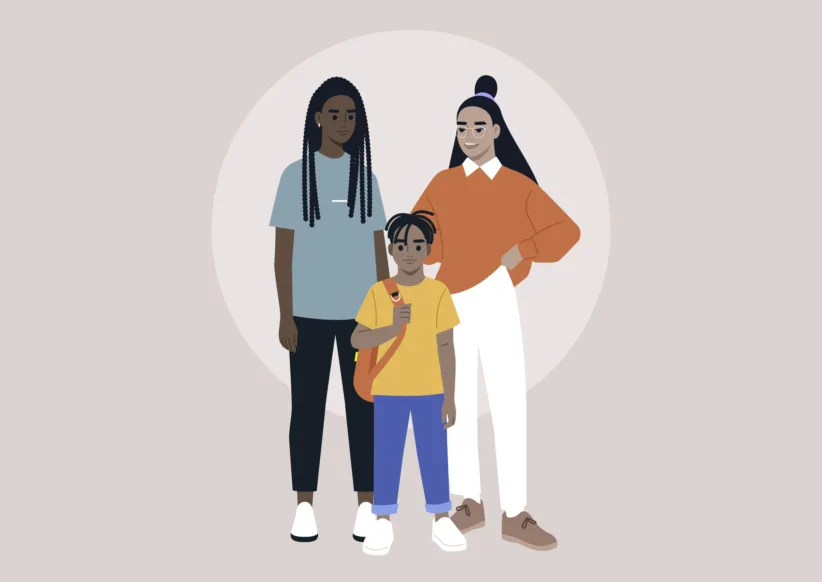Pixar’s Oscar-winning animated movie “Inside Out” has jumpstarted an important conversation, and is shining a spotlight on a topic that is near and dear to parenting and child development expert Denise Daniels’s heart: emotional intelligence.
After years of research, and helping children and parents deal with disaster and grief here in the U.S. and abroad, she has developed a new groundbreaking brand for preschoolers. The Moodsters is based on curriculum from the Yale Center for Emotional Intelligence.
Just like 11-year-old, hockey-playing, Minnesota student Riley Andersen, the adorable character in the animated movie, your young daughter or son may be experiencing various changes in his or her life and feeling emotions he or she can’t quite process. They may be feeling confused or overwhelmed — like Riley, when she is uprooted from her familiar, happy life and finds herself in a new, less-joyful situation, after moving to San Francisco. Suddenly, she’s feeling sad and kind of angry.
The film’s main setting takes place in Riley’s mind, and the story is almost entirely told from the point of view of her five emotions: Fear, Sadness, Joy, Disgust, and Anger. It just so happens that The Moodsters (Coz, Lolly, Snorf, Razzy and Quigly) are five lovable characters that also represent different emotions. According to Daniels, Moodsters use detective skills to solve emotional mysteries, and children learn through the adventures of the characters how to handle challenges and opportunities they may face in their everyday lives. There’s even a feelings meter that kids can point to. For parents, Moodsters are learning tools that help teach children the fundamentals of emotional intelligence.
So, what is emotional intelligence?
It’s the ability to recognize your own and others’ emotions, to understand nonverbal cues, and to manage one’s own feelings and emotions and express them appropriately.
Decades of scientific research reveal that sound emotional intelligence skills benefit children’s physical and psychological health, and well-being.
“We know that kids that learn these skills are more successful in school, and test scores on standardized tests are higher; they do better socially and psychologically and have stronger, healthier relationships,” Daniels notes. They’re even better problem-solvers and have less depression.
Daniels says parents should start talking to their children about feelings during the day and especially at bedtime, when kids often experience fears and anxiety. She emphasizes that little ones should be encouraged to verbalize how they feel early in life — from 1 year old through pre-school and beyond.
“Inside Out” has been shining a spotlight on a very relevant topic that has been the focus of Daniels’s amazing work — how emotional intelligence affects every child’s development, no matter his ethnicity, socioeconomic situation, or circumstances. Moodsters are multicultural. And Daniels says the idea first came about when she realized that all kids’ feelings are universal.
Then when she and her children came down to Ground Zero after 9-11, Daniels knew she had a mission, as she sat down and talked to kids and parents who were dealing with devastating loss and grief. And a workbook she created helped so many kids deal with their emotions. Fifteen million copies were drop shipped across the U.S.
The Peabody Award-winning broadcast journalist said she also worked with children in refugee camps in Sri Lanka, and helped families cope after Hurricane Katrina. And when the economy tanked in 2008, Daniels was there to help kids who were losing their homes and whose parents were losing jobs.
“I was hearing from so many parents, so I called my friends at Scholastic and they asked me to write something for their website and create a workbook for these kids,” she recalled.
Daniels, who lives in Minnesota, said she and her New York-based team send lots of toys to hospitals, and have been getting loads of letters and questions from parents and educators everywhere, even Africa, Germany, and South America. She is also hearing from social workers in New York and meeting with an educational company here. Last fall Daniels went to an amazing school in Harlem, where she talked to young, high-risk students. She said teachers did meditation with the kids and talked about their feelings. New York 1’s camera crew was there.
After the Paris and San Bernardino tragedies, Daniels has been teaching parents how to talk to their kids about terrorism. For tips you can read her Guidelines for Grownups on her website.
The grandmother of three says she is thrilled the movie came out at this time. Daniels is helping lead the charge in that conversation about emotional intelligence and is exposing a common part of growing up that often children, as well as their parents, may have trouble grasping. Many teachers are reaching out to her and there is a growing movement to get The Moodsters into schools. “All this underscores that EQ is beginning to go mainstream,” she says.
“We are our children’s first teachers, and our home is their first school. There’s been a revolution in child psychology, and that revolution is teaching kids EQ skills.”
Find out more info. and where you can get The Moodsters toy and book packs, visit www.denisedanielsparenting.com.
For more on The Moodsters visit www.themoodsters.com. A Learn About Feelings app for iOS and Android is in the works.
Tammy Scileppi is a Queens-based freelance writer and journalist, parent, and regular contributor to New York Parenting. Interviewing hundreds of New York City’s movers and shakers has been an amazing adventure for her. Scileppi’s work has appeared in a variety of media outlets. She has also written book cover copy for Simon and Schuster.





















